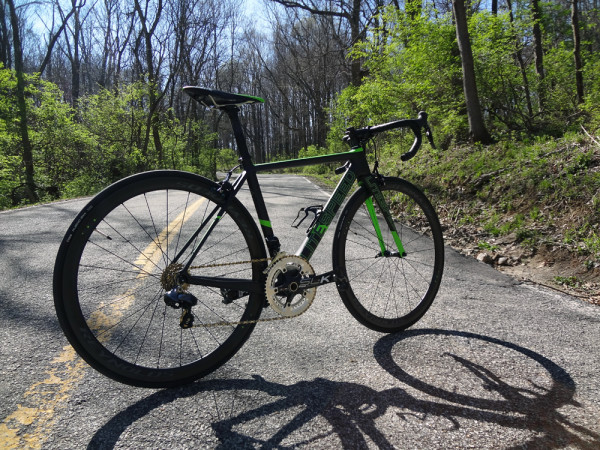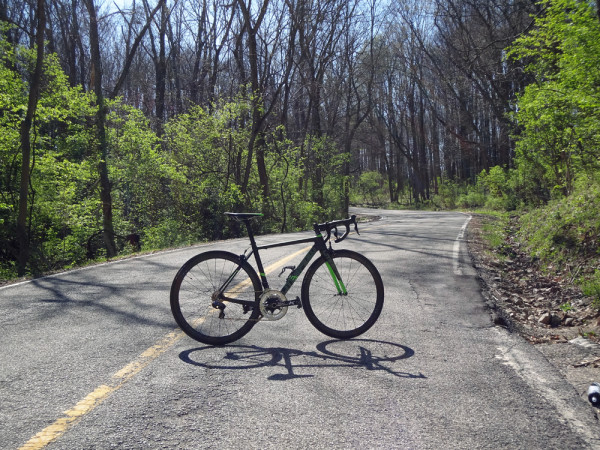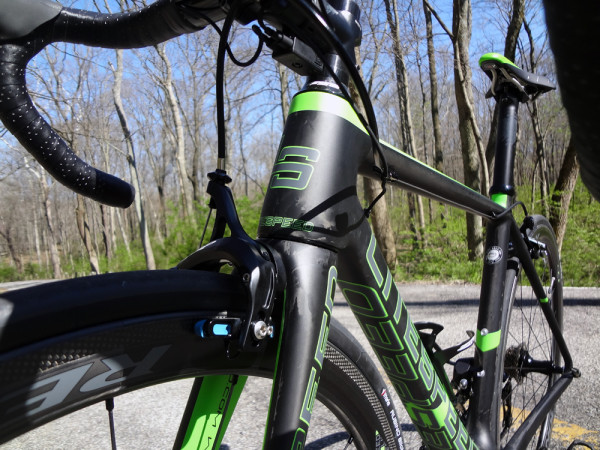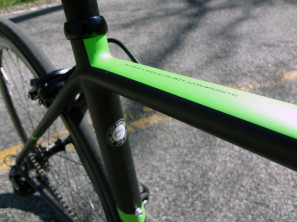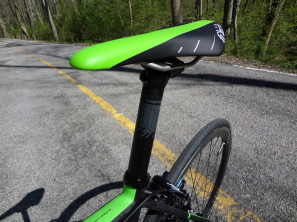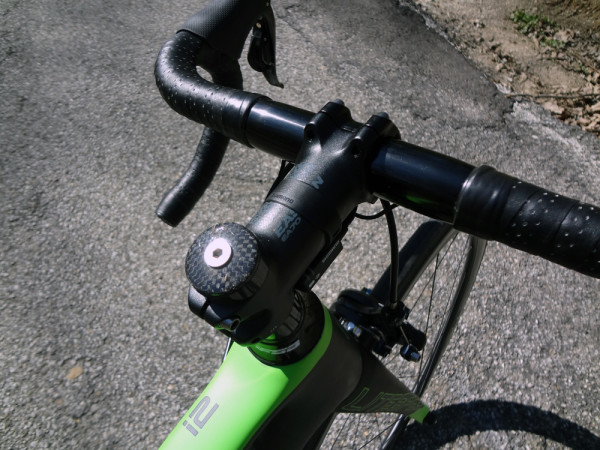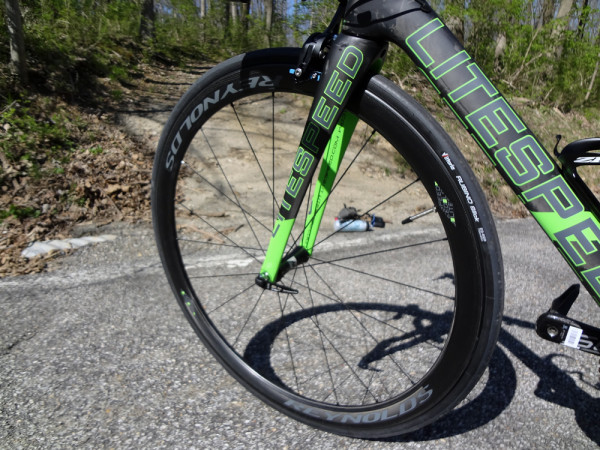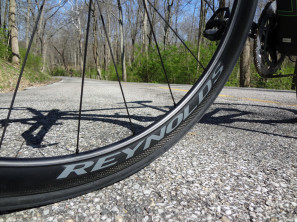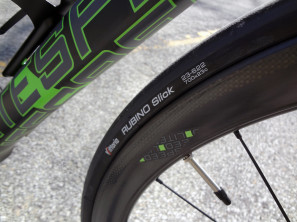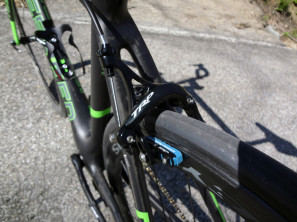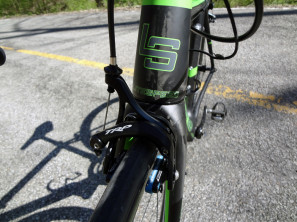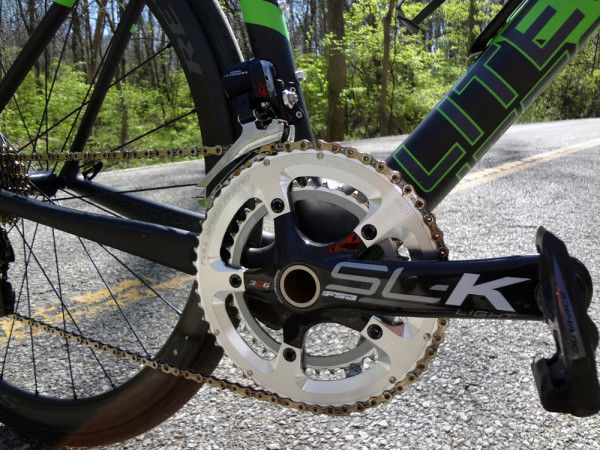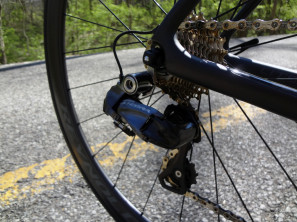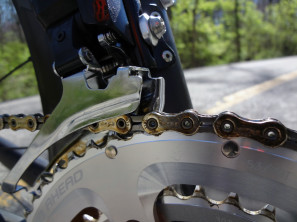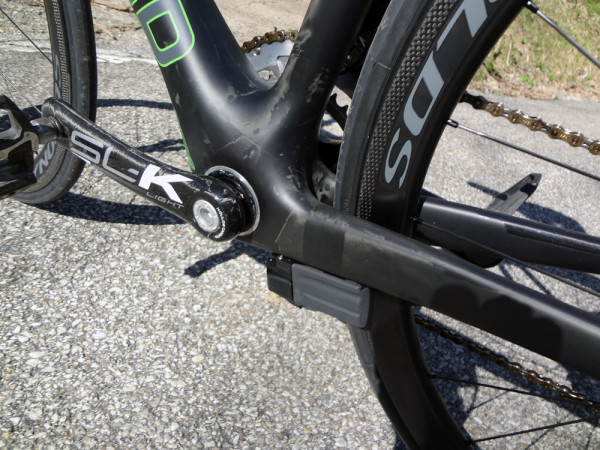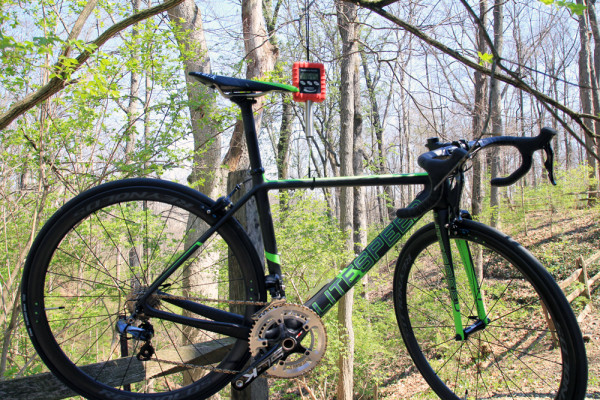While the neon green Litespeed Li2 might share a similar paint scheme to the 9:Zero:7 Whiteout we have in, color is about the only similarity. From the widest tires in the bicycle world to some of the narrowest, Litespeed’s 2014 L series bikes are designed for speed, pure and simple. Originally a company known for their use of titanium, Litespeed has been continually revising their carbon models for years now in order to provide race ready bikes along side of their Ti couins.
After more than four years of development, the UCI approved L series is now the bike of choice for the Astellas Cycling continental team here in the US. The team has had no problem racking up a number of top 10s, podiums, and even victories on the L series including Brecht Dhaene’s recent win at the Winston-Salem Cycling Classic Criterium. Now, the Li2 won’t guarantee you the top step on the podium, but if you’re looking for a bike that’s fast and comfortable it looks like it could be a good place to start…
For a company that cut their teeth in titanium, the L series demonstrates how far they have come with the design of their carbon fiber frames. L series frames are built using Litespeed’s RPM or Reactive Pressure Molding which ensures that the bladder molded tubes are squeezed of all of the excess resin for lighter, more consistent frames.
Starting at the front of the bike, the Li2 incorporates Litespeed’s Quadrilateral System which is a fancy name for the tapered head tube and downtube junction. Starting at the headtube in a triangular shape, the downtube eventually morphs into a rectangle where it joins the oversized BB386 bottom bracket shell and asymmetric seat tube junction for improved power transfer.
Equipped with a 31.6mm Easton EA70 seatpost (not EC70 as listed), it’s clear that the Li2 is meant for racing, though initial impressions left us feeling that the frame is impressively smooth. The color matched Fizik Arione R7 is a nice touch, and highlights the build choice on the Li2 – a smart mix of components to offer race level performance while keeping the price as low as possible.
At a list price of $6000 with sweet carbon wheels, certain tradeoffs have to be made like the choice for an all aluminum cockpit. Honestly though, while the Easton EA70 components may be lower spec than you’ll find on some $6k bikes, the component choice frees up funds for more noticeable improvements like the wheels. The other benefit to less expensive cockpit parts is that if you need to change them for your fit, as is often the case, you’re not left with pricey carbon parts you can’t use.
More than making up for the aluminum Easton bits are the impressive Reynolds Assault SLG carbon clinchers that come standard. Wrapped in Vittoria Rubino Slick 700×23 rubber, the Assault wheels even have tasteful Litespeed graphics colo matched to the frame.
Litespeed chose to outfit the Li2 with TRP R870 brakes instead of the component group matching Shimano Ultegra. The dual pivot brakes are outfitted with the new Reynolds Cryo Blue Power Pads that we saw at Winter Press Camp, which are designed specifically for the Reynolds wheels.
Built with Shimano’s 11 speed Ultegra Di2 6870 group, Litespeed subs in an FSA SL-K Light crank to take advantage of the BB386 bottom bracket. If you’re unfamiliar with the system, BB386 is essentially a BB30 bottom bracket that is 86mm wide. It allows frame manufacturers to build a bigger, stiffer bottom bracket junction, and it can still be easily adapted to run Shimano cranks or other 24mm spindles.
To go along with the FSA crankset, the Li2 is also equipped with an FSA 11 speed SL chain. So far the shifting isn’t noticeably different than the same drivetrain with a Shimano chain, but it will be interesting to see how it fares in the long term.
It’s hard to make out in photos, but the bottom bracket junction on the Li2 is gargantuan and tapers into asymmetric boxy stays. The non-driveside stay is noticeably larger to help resist twisting when you’re sprinting for the line and holds the battery for the Di2 system instead of an internal seatpost battery.
Considering our test bike is a small, the Li2 isn’t the lightest at 16.45 lbs without pedals, but could still hit the UCI minimum weight marks with the right upgrades. If the Li2 isn’t light enough for you, there is always the L1R frame which uses 60T carbon instead of the 30 ton found in the Li2 and other L series bikes.
Stay tuned for the full review.
